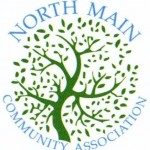Happy New Year!
NMCA Decals
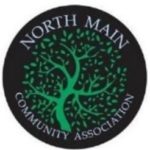 We still have NMCA decals for those who would like them. Just email northmaincomm@gmail.com to request them. Also, we will be mailing 2021 business decals to our business members soon. If you are a business member and do not receive your decal by early February, please email northmaincomm@gmail.com We probably do not have your address; thus, we didn’t know where to send it.
We still have NMCA decals for those who would like them. Just email northmaincomm@gmail.com to request them. Also, we will be mailing 2021 business decals to our business members soon. If you are a business member and do not receive your decal by early February, please email northmaincomm@gmail.com We probably do not have your address; thus, we didn’t know where to send it.
We hope that sometime later this year we can resume our socials and other activities. Until then, please wear a mask to protect yourself and others, observe social distancing, and stay safe!
Development and Other City News
- On January 11, the City Council adopted a budget resolution to appropriate almost $500,000 from the general fund to cover the cost of repairs to the Bobby Pearse Community Center at the North Main Rotary Park. For those new residents, a tree crashed through the roof of the Bobby Pearse Community Center in May 2018. Also included is a new ADA compliant parking lot, additional roofing and painting needs, furniture, fixtures, and other equipment needed for the facility to function when the project is complete. Our understanding is construction is to begin in late January / early February and be ready for the new school year this fall.
- In other action, Greenville City Council has approved the master plan for a Swamp Rabbit Trail extension from Cleveland Park to Clemson University’s International Center for Automotive Research. This represents a $6 million joint effort with county officials that’s been years in the making. Click here to read the full story.
- Mohawk Development: You’ve probably noticed more activity on the curve at Mohawk between Gallivan and E. Hillcrest. In addition to expansion of The Elements in the rear, construction has begun on the R-6 parcels on the curve just down the road. This land was previously cleared for another project which was ultimately denied.
- On January 14, we sent out the following email. We’re repeating it here in case you missed it. Scam Alert. Someone claiming to be with the Greenville Police Department may be calling individuals from what appears to be the City’s police non-emergency number (864-271-5333). The scammer reportedly claims to have an arrest warrant for the person they’re calling and directs them to either come to the Law Enforcement Center or call a specific number to take care of the matter. In similar scams, this is typically followed by a demand for some type of payment to avoid arrest. If you receive a call like this, hang up immediately.
- City Board and Commission Vacancies: Appointments to the City’s boards and commissions occur throughout the year based upon the terms and expiration dates as provided in the by-laws of each board or commission. In filling an expiring position, Council may consider reappointment of an individual to an additional term or may consider appointment of an applicant to the position.
For most City boards and commissions, applicants must reside within the city limits of Greenville. It’s a good way to learn more about how our city government functions and to provide your expertise for the good of all.
The following boards and/or commissions have terms expiring during the current year, requiring appointment consideration by Council to fill terms as shown below. Individuals interested in serving on a City board or commission may complete an application online. Applications are accepted throughout the year by the Office of the City Clerk. Applications are reviewed by City Council eight to ten weeks prior to a term’s expiration date and as unexpected vacancies occur during the year.
Click here for More Information about Expiring Terms.
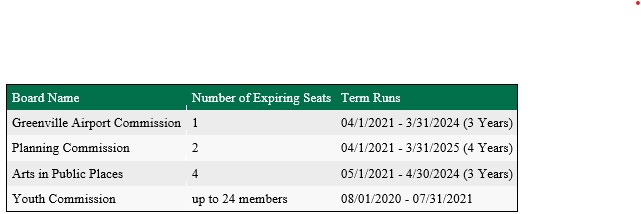
- Greenlink Unveils Free Little Library: A new Free Little Library has been installed inside the Greenlink Transit Center. The Free Little Library will provide Greenlink customers, their family members, and the general public with access to free reading material.
 While children are frequently encouraged to read and many programs are designed to increase literacy levels among youth, adults do not receive the same reminders. According to a 2019 Pew Research Center survey, 27% of adults reported that they had not read a book, in whole or in part, in the past year. Considering that 10 of Greenlink’s bus routes connect in the Transit Center 17 times each day, bus riders transferring between routes will now have 17 opportunities to browse the library’s collection and pick up a book for the trip. In 2019, the average passenger bus trip was 5.3 miles long (approximately a third of an entire route length), which could provide up to 15 minutes of reading time on each bus.
While children are frequently encouraged to read and many programs are designed to increase literacy levels among youth, adults do not receive the same reminders. According to a 2019 Pew Research Center survey, 27% of adults reported that they had not read a book, in whole or in part, in the past year. Considering that 10 of Greenlink’s bus routes connect in the Transit Center 17 times each day, bus riders transferring between routes will now have 17 opportunities to browse the library’s collection and pick up a book for the trip. In 2019, the average passenger bus trip was 5.3 miles long (approximately a third of an entire route length), which could provide up to 15 minutes of reading time on each bus.
For our Four-Legged Friends
Some of you may be familiar with a wonderful program at Greenville County Animal Care (GCAC) called the Home-to-Home program. This program is keeping animals out of the shelter. From  Shelter PR director, Paula Church, “Basically – since we are scheduling owner surrender programs so far out – we can get these animals on home-to-home and most of them get adopted before they reach their appointment time. We started it near the end of August 2020. Since it began, the numbers for 2020 – We posted 242 animals and 169 have been adopted. We only had 19 that were intake here.” For whatever reason, an owner may not be able to keep a pet…due to financial reasons, behavioral issues between pets, death in the family, etc. Instead of surrendering to a shelter, the animal is listed on the Home-to-Home site and those interested in adopting make an appointment to meet them. They are adopted straight from the home and never enter a shelter. It’s definitely a win-win situation!!
Shelter PR director, Paula Church, “Basically – since we are scheduling owner surrender programs so far out – we can get these animals on home-to-home and most of them get adopted before they reach their appointment time. We started it near the end of August 2020. Since it began, the numbers for 2020 – We posted 242 animals and 169 have been adopted. We only had 19 that were intake here.” For whatever reason, an owner may not be able to keep a pet…due to financial reasons, behavioral issues between pets, death in the family, etc. Instead of surrendering to a shelter, the animal is listed on the Home-to-Home site and those interested in adopting make an appointment to meet them. They are adopted straight from the home and never enter a shelter. It’s definitely a win-win situation!!
Remember, both GCAC and The Greenville Humane Society are still offering adoptions by appointment only. You are encouraged to take a look at the adoptable animals online and then make an appointment to come meet your new furr-ever friend.
And check out these links on the GCAC website:
 Searching For A New Place To Live That Accepts Pets?
Searching For A New Place To Live That Accepts Pets?
Check Out This Link: Pet Friendly Apartment Finder- Searching for a Pet Sitter in the Greenville Area?
Check Out This Link: Pet Sitters
February Gardening
Some gardeners are unsure whether to tidy up the garden now by removing dead plants. Sunflower stalks, grasses, and some perennials provide food and cover for wildlife. Birds can’t eat seeds 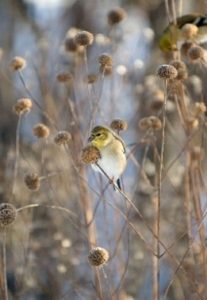 that we cut down and relegate to the garbage or compost. Overwintering butterflies may also be removed with the debris. Also, remember that the dead foliage and stems provide a layer of insulation that will protect the crown and roots of plants during freezing weather. Read more at Dave’s Garden Website. And remember, our risk of frost continues till mid-April. And we have recorded a trace of snow on April 3, back in 1925.
that we cut down and relegate to the garbage or compost. Overwintering butterflies may also be removed with the debris. Also, remember that the dead foliage and stems provide a layer of insulation that will protect the crown and roots of plants during freezing weather. Read more at Dave’s Garden Website. And remember, our risk of frost continues till mid-April. And we have recorded a trace of snow on April 3, back in 1925.
Pruning – Winter is a good time to prune most trees and shrubs. However, do not prune azalea, dogwood, forsythia, redbud and rhododendron – they should be pruned after they bloom, since they set blooms in the fall on the previous season’s growth. If you prune now, you prune off the part that will bloom. Almost anything that blooms after June 1 (except oakleaf hydrangea and late-flowering azalea cultivars… Oakleaf hydrangeas bloom on the previous season’s growth, so prune right after flowering in the fall or in early winter.) can be pruned safely; however, make sure there is no green wood which could start sprouting new growth if we have a prolonged warm period. See Pruning Trees and Pruning Shrubs for more information.
 And when you’re pruning, consider making a brush shelter for small critters. Lay down the largest logs or trunks as a foundation. Pile large branches loosely on top of this layer. Continue building up the pile in successive layers. Make sure to leave open pockets between layers—don’t pack brush. Small animals appreciate a safe place to hide and some extra shelter in extreme weather.
And when you’re pruning, consider making a brush shelter for small critters. Lay down the largest logs or trunks as a foundation. Pile large branches loosely on top of this layer. Continue building up the pile in successive layers. Make sure to leave open pockets between layers—don’t pack brush. Small animals appreciate a safe place to hide and some extra shelter in extreme weather.
Tree Planting – The winter months when trees are dormant are excellent times to plant. Be sure to plant no deeper than the plant came out of the pot, or the top of the root ball if ball-and-burlap. Mix a little phosphorus in the soil where you plant. This encourages root growth which will help the plant get established so it will be ready to put out top growth come spring.
See Planting Trees Correctly for information on the proper way to plant a tree.
Transplanting – This is also a good time to move plants that have overgrown a site or that don’t fit the microclimate of that site (sun, shade, etc.) Plants are dormant and will undergo less stress if transplanted now. Be sure to plant at a similar depth from where they came and get as much of the root ball as possible. http://www.clemson.edu/extension/county/laurens/yard_garden/01_january.html
Plant hardy vegetables and other cool-season crops, such as lettuce, cabbage, broccoli, beets, carrots, radishes, turnips, spinach, peas, and cauliflower. Start seeds of warm-season vegetables indoors.
It’s also a good time to check the pH of your soil to see if amendments are needed for plants you want to add. Remember that azaleas, rhododendrons, hollies, hydrangeas, etc. prefer acidic soils (pH below 7). Check this site for others. Check with the Clemson Cooperative Extension Service for forms, costs, etc.
February is when you should consider fertilizing your fescue lawn. For others you should wait until March. Check out this site for timing info.
Too cold to get out and work in the garden? Get out those catalogs and start browsing and making plans. Maybe consider adding a water feature to provide water for birds and other wildlife. Think about making your garden bee friendly. Our pollinators need your help. There are over 16,000 recognized species of bees world-wide and there are many plants on every continent that rely on insect pollination. Without our bees, the world’s food supply is in grave danger. Urbanization and expanded agricultural business with unsuitable plants has reduced the food available to our bees. There are things that everyone can do to provide food, shelter and safety for our bees and if we all pledge to do our part, the combined millions of gardens can make a huge difference. Our monarch population is starting to rebound since citizen gardeners have taken it upon themselves to plant milkweed. We need to do the same thing for our bees. Become part of the polliNATION and register your garden with the Million Pollinator Garden Challenge. Stand up and bee counted no matter where you live. Your pollinator garden can be registered anywhere in the world.
Have a yard, not a lawn, and let the little flowers and plants that sprinkle through the grass stay. For more information on what to plant to give bees food for the longest period of time, click here or visit the Honeybee Conservancy website.
 Free Trees Trees help you save on energy, reduce your utility bills, and help clean the water and air throughout the Upstate. Thanks to Duke Energy, TreesUpstate has given away over 7,700 trees!
Free Trees Trees help you save on energy, reduce your utility bills, and help clean the water and air throughout the Upstate. Thanks to Duke Energy, TreesUpstate has given away over 7,700 trees!
Energy Saving Trees is a program of the Arbor Day Foundation. This program is locally administered by TreesUpstate and presented by Duke Energy. You can reserve your trees by going to this website.
Schedule for Greenville: February 26th, 2pm to 4pm, and February 27th from 9am to 11am. 840 Mauldin Rd. Limit 2 per household.
What tree species are available? eastern redbud, sweetbay magnolia, red maple, pignut hickory, black tupelo a.k.a. blackgum, American linden a.k.a. basswood, ginkgo, swamp white oak, overcup oak, white oak, shumard oak, bald cypress, eastern redcedar.
“Wild Plants on the Rabbit” has been updated!
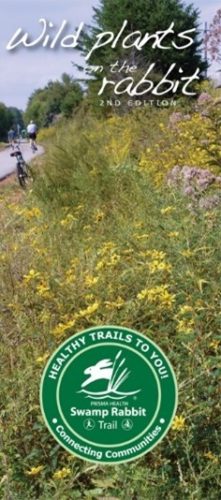 SCNPS announces the second edition of “Wild Plants on the Rabbit”, a pocket-sized brochure showcasing native and naturalized plants on the highly acclaimed Prisma Swamp Rabbit Trail. In addition to a few more plants, the revised brochure’s map includes the proposed Laurens Road corridor extension.
SCNPS announces the second edition of “Wild Plants on the Rabbit”, a pocket-sized brochure showcasing native and naturalized plants on the highly acclaimed Prisma Swamp Rabbit Trail. In addition to a few more plants, the revised brochure’s map includes the proposed Laurens Road corridor extension.
The 20-mile Trail allows people to get up close and personal with plants outside a cultivated setting. A common misconception is that a plant growing “wild” must be native to this area, but many exotic plants have established themselves along the Trail.
The brochure features over 100 trees, shrubs, grasses, ferns, and wildflowers, with a photograph and a short description. SCNPS encourages people to use Wild Plants on the Rabbit as a checklist, checking off plants as they see them. Sharp eyes may spot Beardtongue, Trillium, Bloodroot, Devil’s Walkingstick, Cardinal Flower, Swamp Milkweed, Downy Lobelia, various Sunflowers, and even the small white flowers of the globally rare, federally protected Bunched Arrowhead!
Almost 400 species have been documented on the Trail. Visit https://SCNPS.org/swamprabbit for links to this more complete inventory and to submit photos for identification.
Wild Plants on the Rabbit brochures are free and available at Upstate Chapter events and at other outlets listed here — https://scnps.org/swamprabbit#a_outlets
For the Birds
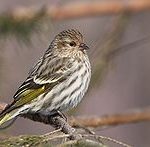 A superflight of northern finches into Maine this winter has been reported. Christmas Bird Counts have impressive totals of purple finches, evening grosbeaks. pine grosbeaks, pine siskins (see image at left), red crossbills and white-winged crossbills. This year’s flight is even more spectacular when we take a broader view. Birders are finding common redpolls as far south as Alabama and Houston, evening grosbeaks as far south as the Gulf Coast states and white-winged crossbills, red crossbills broadly in the southeastern states and pine grosbeaks as far south as Washington, D.C. These finches rarely push so far south and almost never in the abundance of this winter. (I’ve been seeing more finches, including pine siskins, at my feeders recently.) The cold weather in Canada and changes in food supply are presumably what is driving this flight further south.
A superflight of northern finches into Maine this winter has been reported. Christmas Bird Counts have impressive totals of purple finches, evening grosbeaks. pine grosbeaks, pine siskins (see image at left), red crossbills and white-winged crossbills. This year’s flight is even more spectacular when we take a broader view. Birders are finding common redpolls as far south as Alabama and Houston, evening grosbeaks as far south as the Gulf Coast states and white-winged crossbills, red crossbills broadly in the southeastern states and pine grosbeaks as far south as Washington, D.C. These finches rarely push so far south and almost never in the abundance of this winter. (I’ve been seeing more finches, including pine siskins, at my feeders recently.) The cold weather in Canada and changes in food supply are presumably what is driving this flight further south.
It’s time to start cleaning out bird houses and putting up new ones. Bluebirds and some other songbirds start scouting for spring nest boxes in February. Other birds may not nest until later in the season, but they may still use the available houses as shelters from predators, cold temperatures, and poor weather both before and after the nesting season. Birds  that raise multiple broods each season often nest earlier as well. If a house is not up when these birds are ready to lay their first eggs, they may still investigate it as a nesting site later in the season.
that raise multiple broods each season often nest earlier as well. If a house is not up when these birds are ready to lay their first eggs, they may still investigate it as a nesting site later in the season.
Don’t forget the birds during cold periods. They need food, especially high calorie food such as black oil sunflower seed, suet, etc. But more importantly, keep a supply of water available.
The Great Backyard Bird Count provides thousands of data points that show how the winter ranges of some birds have changed significantly due to the warming climate. Another good program is Project FeederWatch …a winter-long survey of birds that visit feeders at backyards, nature centers, community areas, and other locales in North 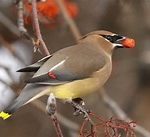 America. FeederWatchers periodically count the birds they see at their feeders from November through early April and send their counts to Project FeederWatch. FeederWatch data help scientists track broadscale movements of winter bird populations and long-term trends in bird distribution and abundance.
America. FeederWatchers periodically count the birds they see at their feeders from November through early April and send their counts to Project FeederWatch. FeederWatch data help scientists track broadscale movements of winter bird populations and long-term trends in bird distribution and abundance.
I’ve had large flocks of both robins and cedar waxwings feasting on the berries on my holly tree. I have one mockingbird who thinks it’s his personal tree each spring, but then he always gets outnumbered and very upset!
Weather Tidbits
For March, the maximum high was 91on March 23, 1907. The minimum high was 27 on March 2, 1980. The maximum low was 65 on March 30, 1896 and the min low was 11 on the 3rd and 15th. The max daily precipitation was 5.35” on March 26, 1901 and the maximum snow was 9.4” on March 13, 1993.
According to NOAA’s Climate Prediction Center, the Jan-Feb-March 2021 temperature outlook favors above normal temperatures for approximately the southern one-half and eastern one-third of the CONUS (Continental US). There are elevated odds of below normal precipitation for approximately the southern one-third to one-half of the CONUS.
Groundhog Day , February 2, historically has its roots in the ancient Christian tradition of Candlemas Day, when clergy would bless and distribute candles needed for winter. The candles represented how long and cold the winter would be. Germans expanded on this concept by selecting an animal (the hedgehog) as a means of predicting weather. Once they came to America, German settlers in Pennsylvania continued the tradition, although they exchanged the hedgehogs to groundhogs, which were plentiful in the Keystone State. In 1887, the Punxsutawney Groundhog Club declared that Phil, the Punxsutawney groundhog, was America’s only true weather-forecasting groundhog, but he’s only correct about 39% of the time.
Why Does the Temperature Fall After Sunrise?
If you’re a weather buff like me, you’ve noticed that after sunrise, the air temperature actually falls a couple of degrees. Why is this? The near-surface air temperature will continue to cool as long as the earth’s outgoing long wave radiation exceeds the sun’s incoming short-wave radiation. The ground is still cooling the ambient air at a faster rate initially than the sun makes the air temperature rise. Eventually the air temperature does rise. The sun transits 15° of the sky in one hour. The sun’s short-wave radiation is not reaching the earth’s surface until it’s physically above the horizon which is about 30 minutes after its apparent sunrise. At this point … incoming short-wave radiation exceeds outgoing long wave radiation and the near-surface air temperature stops cooling.
Did You Know?
- Play-Doh was actually in homes for at least 20 years before being considered a “plaything.” In fact, it was marketed and sold solely for another purpose: wallpaper cleaner! The History of Play-Doh: Good, Clean Fun! | The Strong (museumofplay.org)
- 10% of the world population is left-handed. It is said that men are more likely to be left-handed than women. Various studies have also suggested that the handedness of a person can be determined from the time they spend in the mother’s womb.
- The most commonly used letter in the English alphabets is E. The second most common letters are T, A, I, N, and O. The least used letter in the English alphabets is the letter Q.
- The majority of plant life is located in the ocean. There are around a total of 228, 450 known species in the ocean and around 2 million more species are left undiscovered. Most of the plants found in the ocean are kelp, seaweed, seagrass, and algae. Marine plants are divided into 3 categories, euphotic/sunlight, dispothic/twilight, and aphotic/midnight.
- Cats can jump a height of 7 times thier tail length. This is approximately 8 feet high. This is possible due to the powerful back leg muscles of the cat.
- Giraffes clean their ears with their tongues.
Greenville Voted Friendliest City
As most of you have likely read, each year Condé Nast asks their readers to vote on which city they feel is the friendliest. This was Greenville’s first year gracing the list, and we came in at no. 1.
CNT highlights Greenville’s farm-to-table movement, our craft beer scene, and our natural resources – Falls Park + the Prisma Health Swamp Rabbit Trail – as potential reasons for travelers falling in love with our city.
“Our task must be to free ourselves…by widening our circle of compassion to embrace all living creatures and the whole of nature and its beauty.”
– Albert Einstein
Shop Local
 Keep your dollars in your community. The following companies are committed to preserving the beauty and economic well-being of the North Main Community and the greater Greenville area. Please thank them and give them your business when you can. Click on the business name to go to their website:
Keep your dollars in your community. The following companies are committed to preserving the beauty and economic well-being of the North Main Community and the greater Greenville area. Please thank them and give them your business when you can. Click on the business name to go to their website:
Small businesses have been hurt by the COVID pandemic and are still struggling as customers are still slow to feel comfortable to shop or dine inside. Please continue to support our small and local businesses as much as possible. Thank you!
Gardening and Plants
- Bonnie Berry Garden Design (864.449.5234)
- Dahlia a Florist (864.232.0112)
- Daylily and Hosta Gardens (864.297.9043)
- Plant & Tree Solutions (864.601.5115)
- Schneider Tree Care (864.244.3088)
Law Firms/CPAs/Financial
- Barrett-MacKenzie, LLC (864.232.6247)
- Christophillis & Gallivan, P.A. (864.233.4445)
- Curry, P.A. (864.855.5621)
- Global View Investment Advisors, LLC. (864.272.0818)
- Holmes Law Firm (864.271.2381)
- Jason Elliott Law Firm (864.235.5308)
- Kehl Culbertson Andrighetti, LLC (864.370.8222)
- Law Office of Christine Howard (864.282.8575)
- Pope, Smith, Brown & King (864.242.0656)
- The Carolina Law Group (864.312.4444)
Insurance
Retail/Home Décor
- ATH Interiors, LLC. (864.520-1600)
- Dodson Dig Co. (864.626.3299)
- Gary Hester Interiors (864.232.4975)
- McDunn Woodworking Studio (864.242.0311)
- MarbleLife of the Carolinas (888.627.2530)
- Nicholson Stained Glass (864.235.8650)
- The Personal Touch Cleaning Service of Greenville (864.294.0102).
Realtors
- Allen Tate Realtors (864.386.3180)
- Berkshire Hathaway | C. Dan Joyner (864.244.9111)
- Central Realty Holdings (864.250.9407)
- Coldwell Banker Caine – Angela Reid (864.350.6670)
- GreatUpstate Properties@Keller Williams Greenville Central (864.448.4169)
- Griffin Property Solutions, LLC (GPS) (877.477.1407)
- Keller Williams Upstate: Tara Pickens (864.901.9644)
- Lil Glenn Company, LLC (864.242.0088)
- Pam Childress: BHHS C. Dan Joyner (864.201.8832)
- Rhett Brown |The Marchant Co (864.915.9393)
- Southland Properties (864.313.6825)
- The Haro Group of Keller Williams (864.312.6424)
- The Marchant Company (864.467.0085)
- Wilson Associates Real Estate (864.640.8700)
Food/Drink/Catering
- The Bohemian Cafe (864.233.0006)
- Coffee Underground (864.298.0494)
- Drop-in Store (864.242.0111)
- Greenco Beverage (864.242.1464)
- Hall of Fame Sports Grill (864.346.8378)
- Henry’s Smokehouse (864.232.7774)
- Ji-Roz Restaurant (864.373.9445)
- Naked Pasta (864.283.5844)
- Northgate Soda Shop (864.235.6770)
- Swamp Rabbit Cafe and Grocery (864.255.3385)
- The Community Tap (864.631.2525)
- The Universal Joint (864.252.4055)
Personal Health/Well Being
- Arrive’e (864.275.2084)
- Comprehensive and Cosmetic Dental Studio of Greenville (864.520.2942)
- Dance Ventures at Stone Plaza (864.271.7701)
- Escape Artist Greenville (864.509.9305)
- Fellowship Bible Church (864.255.9520)
- Gateway House, Inc. (864.242.9193)
- Integrative Health Partners (864.365.6156)
- Julie Thaxton, Mary Kay – Senior Beauty Consultant (864.616.8150)
- New View Counseling (941.751.8003)
- Northside United Methodist Church (864.233.8359)
- Stone Plaza Pharmacy (864.233.7940)
Home Improvement/Builders/Architects
- 3D Land Surveying, Inc. (864.272.0274)
- CarolinaCrafted Construction, LLC (864.449.1779)
- Corley Plumbing Air Electric (864.908-3377)
- Darrohn Engineering, LLC (864.346.2170)
- Greenville Remodeling and Restoration (864.484.3007)
- Jordan Wholesale Lumber Co. (864.232.9686)
- JWK Design, LLC (864.214.5323)
- O’Leary Cole, Inc. (864.233.1606)
- Preferred Choice Heating & Air (864.233.8001)
- Priority One Security (864-346-5351)
- Ryan Miller Builders (864.303.8103)
- Royal Engineering, Inc. (864.235-4425)
- UBuildIt (864.676.1113)
Miscellaneous Professional Services
- Brainstorm Signs (864.377.4264)
- Cuddly Critters Pet Sitting (864.901.3189)
- Deb Sofield (864.275.8877)
- North Main Neighbors (864.630.9931)
- Palmetto Plating Company (864.859.9314)
- Propel HR (800.446.6567)
- Redhype (864.232.2000)
- Servpro of West Greenville (864.275.1548)
- Sunnie and DeWorken Group (864.905.5529)
If you would like to see your company listed here, please join the NMCA today! Businesses do not have to be located in the North Main Neighborhood. They only need to provide services to North Main residents.
Calendar
City Council Formal Meeting and Work Session schedules can be found at http://www.greenvillesc.gov/city_government/meet.asp
*** You can find all of the city events and meetings on the City Calendar website.
- The Hughes Main Library has numerous programs for adults and children. Check out their February Calendar.
- There’s always something new and fun at the Greenville Zoo. Baby watch is still underway! Don’t forget to keep up with Autumn’s pregnancy via our 24/7 live giraffe cam, or you can come visit Autumn, Miles, and Kellan on your next trip to the zoo! Giraffe cam: https://greenvillezoofoundation.org/Camera
- The Children’s Museum has great programs for kids. Check them out at their website calendar
- Check out the current exhibits and other programs at the Upstate History Museum.
- Don’t forget about a great local resource for family activities. Macaroni Kid lists all kinds of local activities for kids and families.
- Another great online resource is ‘Kidding Around Greenville’.
For other events in this area bookmark Go-greenevents for a listing of various events with registration, etc., handled online to save needless waste of paper.
Dance Ventures is accepting Adult Students for New Classes in Tap, Ballet, Jazz and cardioTapdance® that started in January. Social distancing and mask wearing practices are followed. 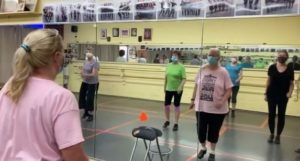 Please call, text or voice for more information. 864-271-7701… leave a message!! Note: Beginner classes start March 15. Taking names now. The first class in any discipline is free. Shoes are available or you can try ballet or jazz in socks.
Please call, text or voice for more information. 864-271-7701… leave a message!! Note: Beginner classes start March 15. Taking names now. The first class in any discipline is free. Shoes are available or you can try ballet or jazz in socks.
Feb Due to guidance from the CDC regarding gatherings, staff are postponing all Cook Local classes at Swamp Rabbit Café and Grocery. Hopefully they will be able to resume in the future.
Feb – Check out the Community Tap calendar of events.
Feb 19th – 21st – Switch-a-Roos. Greenville’s Largest Children’s Consignment Event. Greenville Convention Center. 1 Exposition Drive. Free to the public.
Check out the events at the Carolina Music Museum at Heritage Green.
Greenville County Museum of Art – The Museum is open to the public Wednesday through Saturday, 10 am – 6 pm and on Sundays 1 – 5 pm. As always, admission is free. Considered the premier American art museum in the South, the GCMA is home to the world’s largest public collection of watercolors by iconic American artist Andrew Wyeth. Visit their website to learn about current exhibitions.
Feb 12-15 – Great Backyard Bird Count. The Great Backyard Bird Count is an annual four-day event that occurs across the continent. Anyone can participate, from beginning bird watchers to experts. It takes as little as 15 minutes on one day, or you can count for as long as you like each day of the event. It’s free, fun, and easy – and it helps the birds. In 2020, 27,270,156 total birds were counted, 6,942 species of birds were identified, representing 194 countries.
The North Main Community Association does not give, sell, or otherwise distribute your email or other information to third parties.
The use of trade names or advertisements in this publication does not constitute endorsement or discrimination by the North Main Community Association.
